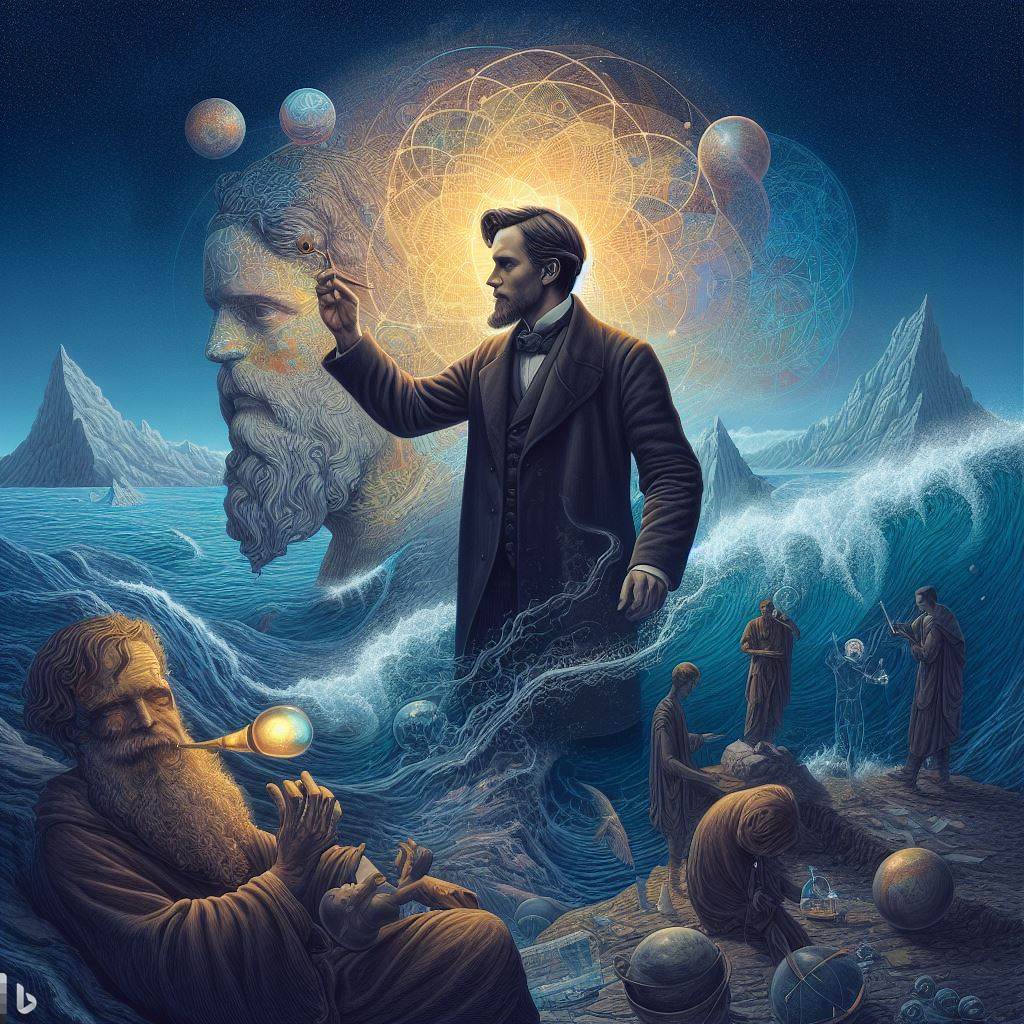Welcome to a journey of self-discovery and enlightenment as we explore the profound philosophical insights of Hermann Hesse. In today’s fast-paced and chaotic world, finding inner peace and tranquility has become increasingly elusive. However, Hesse’s works offer a guiding light, providing a deeper understanding of our own existence and the keys to attaining inner harmony.
Hermann Hesse, a German-born Swiss author and poet, is widely revered for his contemplative writings that delve into the complexities of the human psyche. His works, such as “Siddhartha,” “Steppenwolf,” and “The Glass Bead Game,” are treasured for their exploration of spiritual enlightenment, individualism, and the quest for meaning in life.
In this article, we will delve into the core philosophical themes and insights that are intricately woven into Hesse’s literary legacy. We will navigate the turbulent waters of self-discovery, examining how Hesse’s characters embark on transformative journeys, battling their inner demons, and ultimately finding peace within themselves.
By immersing ourselves in Hesse’s philosophical ideas, we will uncover the path to inner peace. We will explore his unique perspective on spirituality, identity, and the human condition, drawing valuable lessons from his visionary writings.
So join us as we embark on this enlightening expedition into the realm of Hermann Hesse’s philosophical insights. Prepare to unlock hidden depths within yourself and discover the secrets to achieving serenity amidst the chaos of the modern world.
Exploring the Life and Works of Hermann Hesse: A Journey to Inner Peace
Embark on a captivating journey through the life and works of Hermann Hesse, a renowned writer whose masterpieces have touched countless souls. As we delve into his thought-provoking novels and essays, we discover a profound exploration of the human condition and a relentless pursuit of inner peace.
From Siddhartha to Steppenwolf: Unveiling Hermann Hesse’s Wisdom for Inner Peace
Unveil the hidden gems of wisdom in Hermann Hesse’s timeless works, from the spiritual odyssey of Siddhartha to the introspective darkness of Steppenwolf. Through his characters’ quests for self-discovery and liberation, Hesse imparts invaluable teachings on finding harmony amidst life’s chaos, paving the way to inner peace.
Discovering the Power of Self-Reflection: Hermann Hesse’s Philosophical Teachings on Inner Peace
Dive deep into Hermann Hesse’s philosophical teachings on the transformative power of self-reflection. Through his works, Hesse implores us to embark on a soul-searching journey, shedding light on the importance of introspection, self-awareness, and acceptance to attain profound serenity and inner peace.
The Alchemist of Words: Unveiling Hermann Hesse’s Path to Attaining Inner Peace
Unveil the alchemy of words in Hermann Hesse’s literary universe, where imagination meets introspection. Hesse crafts powerful narratives that guide us towards an elusive yet attainable state of inner peace. Through his words, he invites us to explore our own soul’s depths and discover the transformative potential within.
Navigating the Labyrinth of the Soul: Hermann Hesse’s Philosophical Insights for Inner Peace
Embark on a profound exploration of the labyrinth of the soul with Hermann Hesse as our guide. Through his philosophical insights, Hesse illuminates the intricacies of the human psyche and offers guidance on navigating the complexities of existence. With his unique perspective on love, spirituality, and self-discovery, Hesse unveils a roadmap to finding lasting peace amidst the enigmatic labyrinth of our lives.
The Philosophy of Inner Peace
Siddhartha
One of Hesse’s most famous novels, “Siddhartha,” follows the spiritual journey of a young man named Siddhartha as he seeks enlightenment and inner peace. The novel delves into themes of self-discovery, mindfulness, and the pursuit of spiritual fulfillment.
“The Glass Bead Game” (also known as “Magister Ludi”)
This novel is set in a future world where an intellectual elite engages in a complex and meditative game called the Glass Bead Game. While the book explores various themes, it touches on the idea of finding inner harmony and balance through intellectual pursuits.
Hesse’s fascination with Eastern philosophy
Hesse was greatly influenced by Eastern philosophies, especially Zen Buddhism, Taoism, and Hindu spirituality. His exploration of these philosophies often deals with the quest for inner peace, the rejection of materialism, and the importance of finding one’s authentic self.
Essays and lectures
Hermann Hesse also wrote numerous essays and delivered lectures, where he discussed his thoughts on spirituality, inner peace, and personal growth. Some examples include “Concerning the Soul,” “The Way to Self-knowledge,” and “The Poet.”
Influence on the counter-culture movement
Hesse’s writings gained popularity in the 1960s, as his themes resonated with the counter-culture movement seeking personal liberation and alternative spiritualities. Many considered his works as sources of inspiration for the quest for inner peace and self-realization during that period.
Overall, Hermann Hesse’s body of work offers various insights into the pursuit of inner peace, self-discovery, and spiritual fulfillment. While he did not explicitly write a book titled “The Philosophy of Inner Peace,” his novels, essays, and lectures address these themes in different contexts.

In conclusion
This article has explored the profound journey towards inner peace through the philosophical insights of Hermann Hesse. Through his transcendent works, such as Siddhartha and Steppenwolf, Hesse brilliantly captures the complexities of human existence and offers valuable wisdom on how to navigate the trials and tribulations of life in order to attain inner peace.
Throughout his works, Hesse emphasizes the importance of self-discovery, self-acceptance, and embracing the interconnectedness of all things. He urges readers to embark on a personal quest, seeking answers within themselves rather than relying solely on external sources of validation or fulfillment. By detaching from societal norms and attuning to their own inner voice, individuals can find true authenticity, liberation, and ultimately, inner peace.
Moreover, Hesse highlights the significance of embracing both light and dark aspects of existence, understanding that they are not mutually exclusive but rather integral parts of the human experience. He encourages readers to confront their own inner demons and shadows, acknowledging them as necessary for personal growth and transformation. By accepting and integrating these aspects, individuals can cultivate a sense of wholeness and serenity within themselves.
Furthermore, Hesse urges individuals to break free from the constraints of time and societal expectations, emphasizing the eternal present moment as the gateway to true inner peace. By letting go of past regrets and future anxieties, individuals can fully immerse themselves in the beauty and harmony of the present, finding solace and tranquility within the here and now.
In unveiling the philosophical insights of Hermann Hesse, it becomes apparent that inner peace is not a destination to be reached, but rather a continuous journey of self-discovery, acceptance, and growth. By following in the footsteps of Hesse’s protagonists, readers are encouraged to embark on their own personal quests, embracing both light and dark aspects of existence, and letting go of past and future concerns. Through these invaluable insights, Hesse reminds us that true inner peace is not elusive or unattainable, but rather lies within each individual waiting to be unveiled and embraced.
